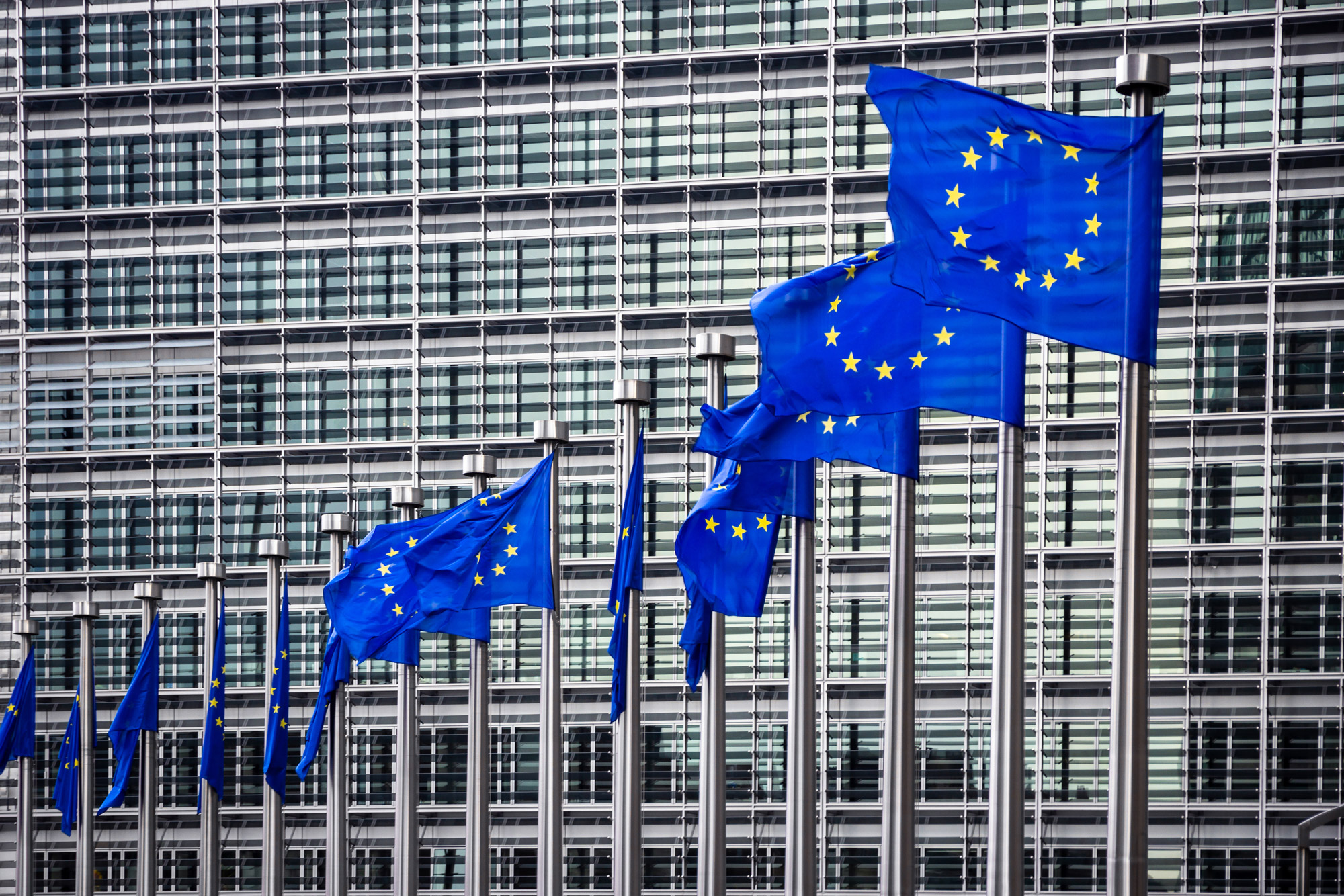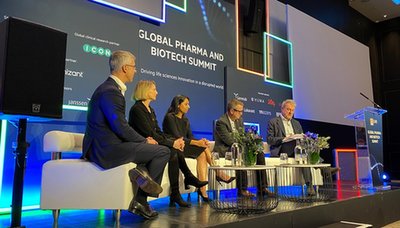Feature
EU 2023: Key regulatory changes
The ongoing rollout of the new Medical Device Regulation (MDR) is defining the landscape for medical devices in the EU. Bernard Banga reviews the key changes in 2023.

Credit: Shuterstock / VanderWolf Images
The new EU Medical Device Regulation (MDR) comes in the wake of the PIP scandal and issues relating to orthopaedic implants. The MDR, which came into force on 26 May, 2021, replaces the Medical Devices Directive (MDD) and the Active Implantable Medical Devices Directive. It was introduced to establish a more robust and transparent regulatory framework for medical devices, prioritising patient safety and health while promoting innovation. It represents a radical upheaval in the EU, which accounts for 26.4% of the world’s medical devices market, worth €160 billion to 35,000 med-tech firms. The new MDR tightens device control, enhancing safety, and introduces more rigorous pre-market scrutiny and transparent databases as well as improved post-market surveillance. In October 2023, nearly 23,000 certificates issued under the old directives were due to expire in 2024, posing a threat of shortages to the EU’s medical device market. Reuters is reporting a lack of notified bodies, drawn-out procedures and prohibitive compliance costs, prompting a dozen EU-based firms such as Sweden’s Getinge AB to withdraw products from the EU.
MDR transition pushed out to 2028
The European Parliament and the Council of the European Union voted in March 2023 to extend the deadlines for complying with the EU MDR to December 2027 or December 2028, depending on device risk classification, granting manufacturers and notified bodies more time to complete conformity assessment procedures. According to this amending regulation, products approved under the previous Medical Devices Directive (MDD) can still be placed on the EU market under certain conditions. This applies to devices which are class I devices under Directive 93/42/EEC (MDD), for which an EC declaration of conformity was drawn up prior to 26 May 2021 and for which the conformity assessment procedure under the MDR requires the involvement of a notified body. For devices other than class I devices, the extension of the transitional period and the eligibility to benefit from it depend on the risk class of the medical device and the involvement of a notified body in the conformity assessment procedure under the MDR. It also deletes the “sell-of” date in both the MDR and IVDR, when devices placed on the market before or during the transitional periods which are still in the supply chain would have had to be withdrawn.
EU antitrust regulator raids cardiovascular device firm
The European Commission, in its role as the EU’s antitrust watchdog, carried out a raid on 19 September, probing a cardiovascular device company for potential abuse of market power, a groundbreaking move in the world of medical devices. In its press release, the Commission withheld both the company’s name and the EU member state involved. Companies breaching EU antitrust laws could face a fine of up to 10% of their global turnover. Nevertheless, the company targeted by the raid is Edwards Lifesciences, which has been identified as the subject of the investigation into potential antitrust violations relating to Article 102 of the Treaty on the Functioning of the European Union (TFEU), which prohibits abuses of a dominant market position. In a statement on the Edwards Lifesciences website, the company said: “Edwards Lifesciences is cooperating with the European Commission regarding its inspection in relation to EU competition law. We have an unwavering commitment to healthy, fair competition; when innovative companies like ours compete, patients benefit. We remain confident in our business practices and will not be commenting further at this time”.
Germany’s medtech market skyrockets, pioneers e-health regulations
Germany, the world’s third-largest medical technology market behind the US and Japan, boasts a mammoth industry worth €33.6 billion annually. Numbering over 250,000 employees, it is Europe’s largest market. The German Federal Ministry of Health introduced two key regulations in June 2023: the Health Data Use Act (GDNG) and the Digital Act (DigiG). The GDNG grants industry access to patient health data for research, priming Germany for pricing and the European Health Data Space (EHDS). DigiG revises pricing and reimbursement rules for Digital Health Apps (DiGA). DiGAs currently qualify for enhanced reimbursement depending on performance and success criteria. Contracts must include a 20% performance-based price element, utilising real-world data for assessment. Telemedicine applications in Germany will expand under the DigiG. In 2023, Germany has already embraced 40 digital health solutions qualifying for statutory health insurance reimbursement, setting a European benchmark.
France’s "stop-go" regulations
Ranked third in Europe for medical devices, France is home to 1,540 med-tech companies generating €30.7 billion in sales. To foster innovation, France revamped regulations to fast-track devices into its reimbursement procedures. As long ago as 2015, France created an innovation package to facilitate access to reimbursement for innovative medical devices by allowing temporary cover while collecting additional data on their efficacy and clinical value. This year, government bodies implemented a transitional reimbursement scheme for procedures using innovative medical devices listed for reimbursement. Additionally, they initiated advanced reimbursement (PECAN) for cutting-edge digital medical devices (DMN). France’s pioneering move came on 22 June, 2023: reimbursing medical telemonitoring systems with proven clinical benefits or improvements for care organisations. Back in March 2023, despite opposition from specialist organisations, the authorities removed two categories of innovative medical devices – thromboaspiration catheters and guide-wires for measuring coronary flow reserve –from the “Heading V” reimbursement category under the List of Reimbursable Products and Services (LPPR) established five years ago. Observers cite this as evidence of France’s erratic regulatory approach to innovative medical technology, leading to a stop-go scenario.
UK: new post-market surveillance requirements
The UK medical device sector employs 102,800 people with an annual turnover of €7.1 billion. In summer 2023, the UK government introduced provisions to ease the transition to the future framework for medical devices, including extending acceptance of CE marked medical devices on the UK market beyond 30 June 2023. This was implemented through the Medical Devices Amendment Regulations 2023, which extended the acceptance of CE marked devices in Great Britain. This extension is part of the government’s drive for smarter regulation, aiming to cut business costs and time required to place products on the market and benefit consumers.
In October 2023, the Medicines and Healthcare products Regulatory Agency (MHRA) released a draft outlining the proposed new post-market surveillance (PMS) framework for implementation in the UK by mid-2024. This initiative, detailed in the newly added Part A4 of the UK MDR, will encompass all general medical devices, active implantable medical devices, and in-vitro diagnostic medical devices, with certain exceptions.
The paper showcased attempts to make GPT-4 produce data that supported an unscientific conclusion – in this case, that penetrating keratoplasty had worse patient outcomes than deep anterior lamellar keratoplasty for sufferers of keratoconus, a condition that causes the cornea to thin which can impair vision. Once the desired values were given, the LLM dutifully compiled a database that to an untrained eye would appear perfectly plausible.
Taloni explained that, while the data would fall apart under statistical scrutiny, it didn’t even push the limits of what Chat-GPT can do. “We made a simple prompt […] The reality is that if someone was to create a fake data set, it is unlikely that they would use just one prompt. [If] they find an issue with the data set, they could fix it with consecutive prompts and that is a real problem.
“There is this sort of tug of war between those who will inevitably try to generate fake data and all of our defensive mechanisms, including statistical tests and possibly software trained by AI.”
The issue will only worsen as the technology becomes more widely adopted too. Indeed, a recent GlobalData survey found that while only 16.1% of respondents from its Hospital Management industry website reported that they were actively using the technology, a further 26.8% said either that they had plans to use it or were exploring its potential use.
Nature worked with two researchers, Jack Wilkinson and Zewen Lu, to examine the dataset using techniques that would commonly be used to screen for authenticity. They found a number of errors including a mismatch of names and sexes of ‘patients’ and lack of a link between pre- and post-operative vision capacity.
In light of this, Wilkinson, senior lecturer in Biostatistics at the University of Manchester, explained in an interview with Medical Device Network that he was less concerned by AI’s potential to increase fraud.
“I started asking people to generate datasets using GPT and having a look at them to see if they could pass my checks,” he said. “So far, every one I’ve looked at has been pretty poor. To be honest [they] would fall down under even modest scrutiny.”
He acknowledged fears like those raised by Dr. Taloni about future improvements in AI-generated datasets but ultimately noted that most data fraud is currently done by “low-skill fabricators,” and that “if those people don’t have that knowledge, they don’t know how to prompt Chat-GPT to have it either.”
The problem for Wilkinson is how widespread falsification already is, even without generative AI.

Caption: The US Pentagon is seeking to reduce carbon emissions through a range of programmes, but will it go far enough? Credit: US DoD
The mine’s concentrator can produce around 240,000 tonnes of ore, including around 26,500 tonnes of rare earth oxides.
Gavin John Lockyer, CEO of Arafura Resources
Total annual production

$345m: Lynas Rare Earth's planned investment into Mount Weld.

Caption. Credit:

Phillip Day. Credit: Scotgold Resources